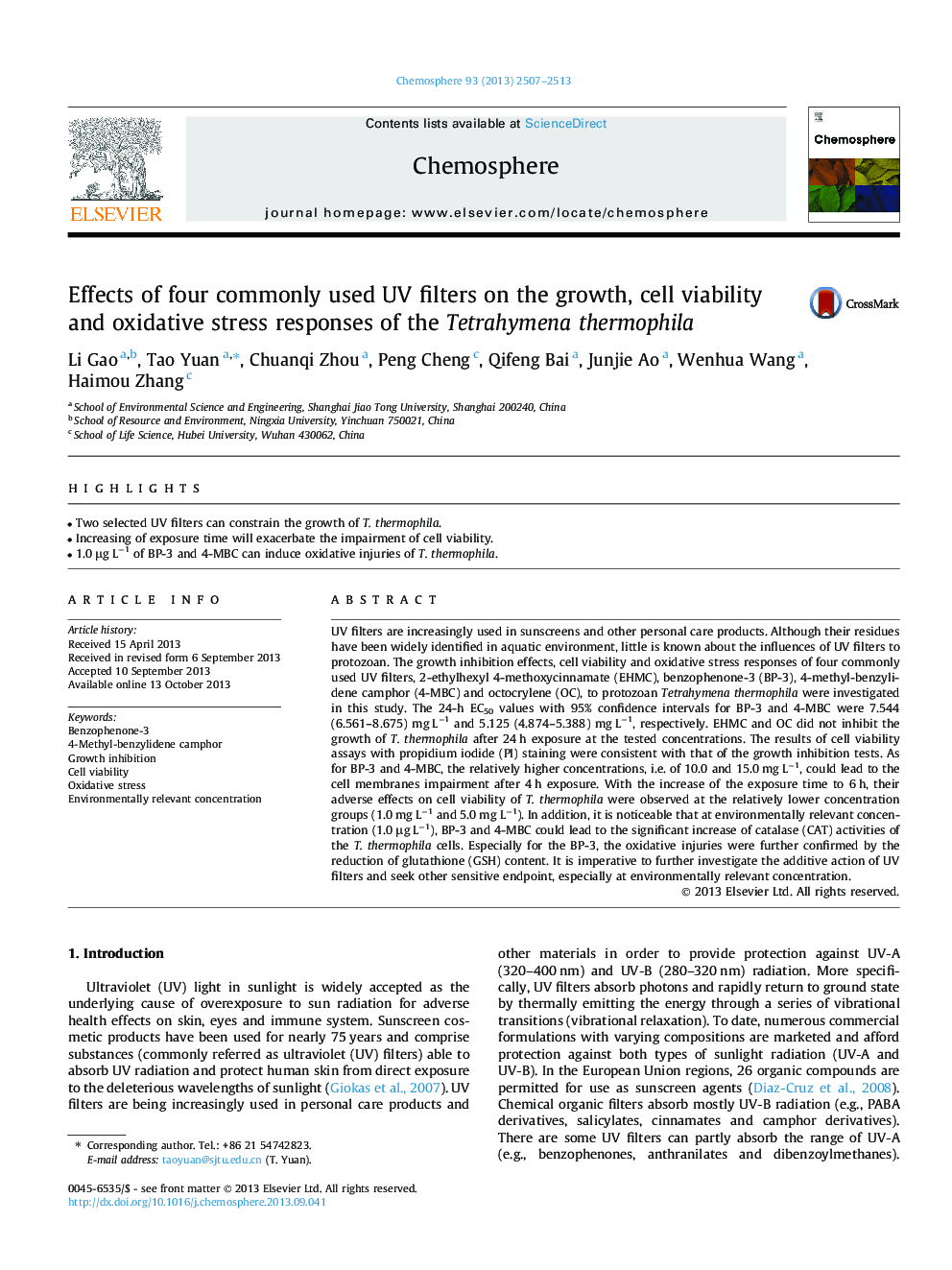| Article ID | Journal | Published Year | Pages | File Type |
|---|---|---|---|---|
| 6309644 | Chemosphere | 2013 | 7 Pages |
â¢Two selected UV filters can constrain the growth of T. thermophila.â¢Increasing of exposure time will exacerbate the impairment of cell viability.â¢1.0 μg Lâ1 of BP-3 and 4-MBC can induce oxidative injuries of T. thermophila.
UV filters are increasingly used in sunscreens and other personal care products. Although their residues have been widely identified in aquatic environment, little is known about the influences of UV filters to protozoan. The growth inhibition effects, cell viability and oxidative stress responses of four commonly used UV filters, 2-ethylhexyl 4-methoxycinnamate (EHMC), benzophenone-3 (BP-3), 4-methyl-benzylidene camphor (4-MBC) and octocrylene (OC), to protozoan Tetrahymena thermophila were investigated in this study. The 24-h EC50 values with 95% confidence intervals for BP-3 and 4-MBC were 7.544 (6.561-8.675) mg Lâ1 and 5.125 (4.874-5.388) mg Lâ1, respectively. EHMC and OC did not inhibit the growth of T. thermophila after 24 h exposure at the tested concentrations. The results of cell viability assays with propidium iodide (PI) staining were consistent with that of the growth inhibition tests. As for BP-3 and 4-MBC, the relatively higher concentrations, i.e. of 10.0 and 15.0 mg Lâ1, could lead to the cell membranes impairment after 4 h exposure. With the increase of the exposure time to 6 h, their adverse effects on cell viability of T. thermophila were observed at the relatively lower concentration groups (1.0 mg Lâ1 and 5.0 mg Lâ1). In addition, it is noticeable that at environmentally relevant concentration (1.0 μg Lâ1), BP-3 and 4-MBC could lead to the significant increase of catalase (CAT) activities of the T. thermophila cells. Especially for the BP-3, the oxidative injuries were further confirmed by the reduction of glutathione (GSH) content. It is imperative to further investigate the additive action of UV filters and seek other sensitive endpoint, especially at environmentally relevant concentration.
